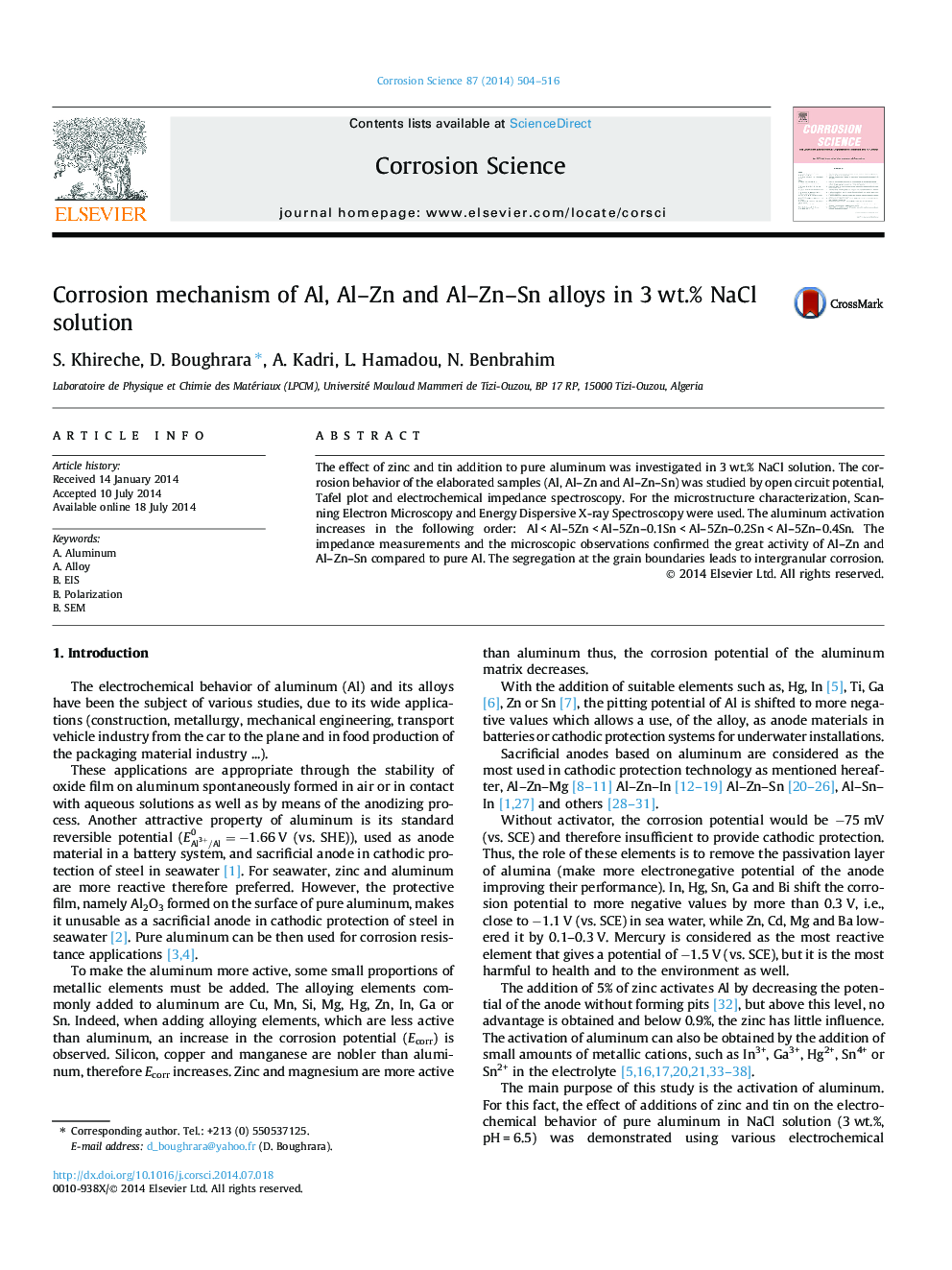| Article ID | Journal | Published Year | Pages | File Type |
|---|---|---|---|---|
| 1468757 | Corrosion Science | 2014 | 13 Pages |
•We elaborate Al–5Zn–xSn sacrificial anodes (x = 0.1%, 0.2% and 0.4%).•Increasing Sn amount does activate Al alloys.•The anode dissolution in NaCl initiates at precipitations where Sn is enriched.•Sn enhances uniform attack on the surface of the Al alloy.•Al–Zn–Sn anodes perform better than the Al–Zn anode.
The effect of zinc and tin addition to pure aluminum was investigated in 3 wt.% NaCl solution. The corrosion behavior of the elaborated samples (Al, Al–Zn and Al–Zn–Sn) was studied by open circuit potential, Tafel plot and electrochemical impedance spectroscopy. For the microstructure characterization, Scanning Electron Microscopy and Energy Dispersive X-ray Spectroscopy were used. The aluminum activation increases in the following order: Al < Al–5Zn < Al–5Zn–0.1Sn < Al–5Zn–0.2Sn < Al–5Zn–0.4Sn. The impedance measurements and the microscopic observations confirmed the great activity of Al–Zn and Al–Zn–Sn compared to pure Al. The segregation at the grain boundaries leads to intergranular corrosion.
